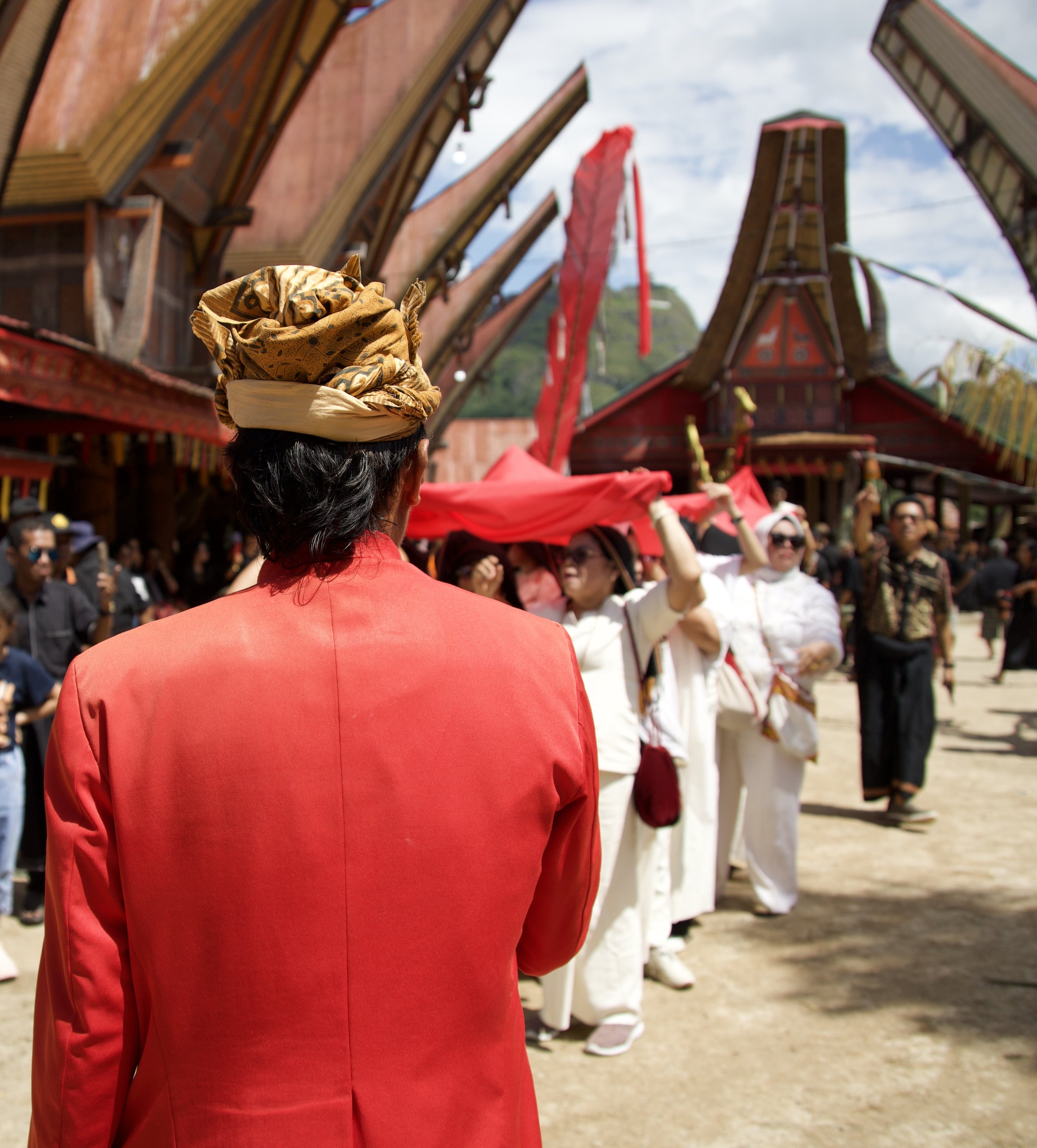After quite the epic journey, I found myself in the highlands of South Sulawesi, nestled in the stunning landscape of Toraja. Surrounded by mountains, jungle, and rice fields, this place is known as the “Land of the Dead”- and for good reason. Here, life and death are not separated. Death is a process that keeps the deceased forever intertwined with the living community through rituals that have been passed down for generations.
I spent a month in Sulawesi, immersing myself in the ancient death practices and rituals of the Torajan people, building connections with locals (and, of course, the very vocal chickens and a very cute dog called Milli Vanilli). From the moment I arrived, I could feel the weight of history in the air. Every moment felt important, every conversation a chance to learn about how death is part of everyday life here.
The journey to Toraja was nothing short of a wild ride. I made both flights but missed my bus, so I jumped into a taxi, chasing it down like something out of an action film. After ten exhausting hours, with barely any sleep over two days, I finally rolled into Rantepao on the edge of Toraja. The landscape in Toraja was breathtaking- mountains, jungles, and rice fields stretching for miles. And then, there was death, present in a way that felt alive. Coffins rested in bamboo huts by the roadside, and billboards advertised funerals with the same energy you’d expect from a concert or major event.
But what struck me most was how seamlessly grief and remembrance were woven into daily life. In Toraja, grieving doesn’t feel like letting go; it feels like holding on to the essence of the person, reshaping what it means to be both living and dead. The deceased remain at home, cared for and spoken to as part of the family until the elaborate funeral rites can be performed. It’s a slow, patient unfolding, where loss is a transformation rather than an abrupt absence.
The death rituals of Toraja are unique, filled with beauty, reverence, and a deep connection to ancestors. They reflect a delicate balance between life and death, where the community gathers not to mourn a finality but to honour a transition. It’s a practice that’s beautiful, powerful, and humbling, and it’s something I’ll carry with me for many years to come.








